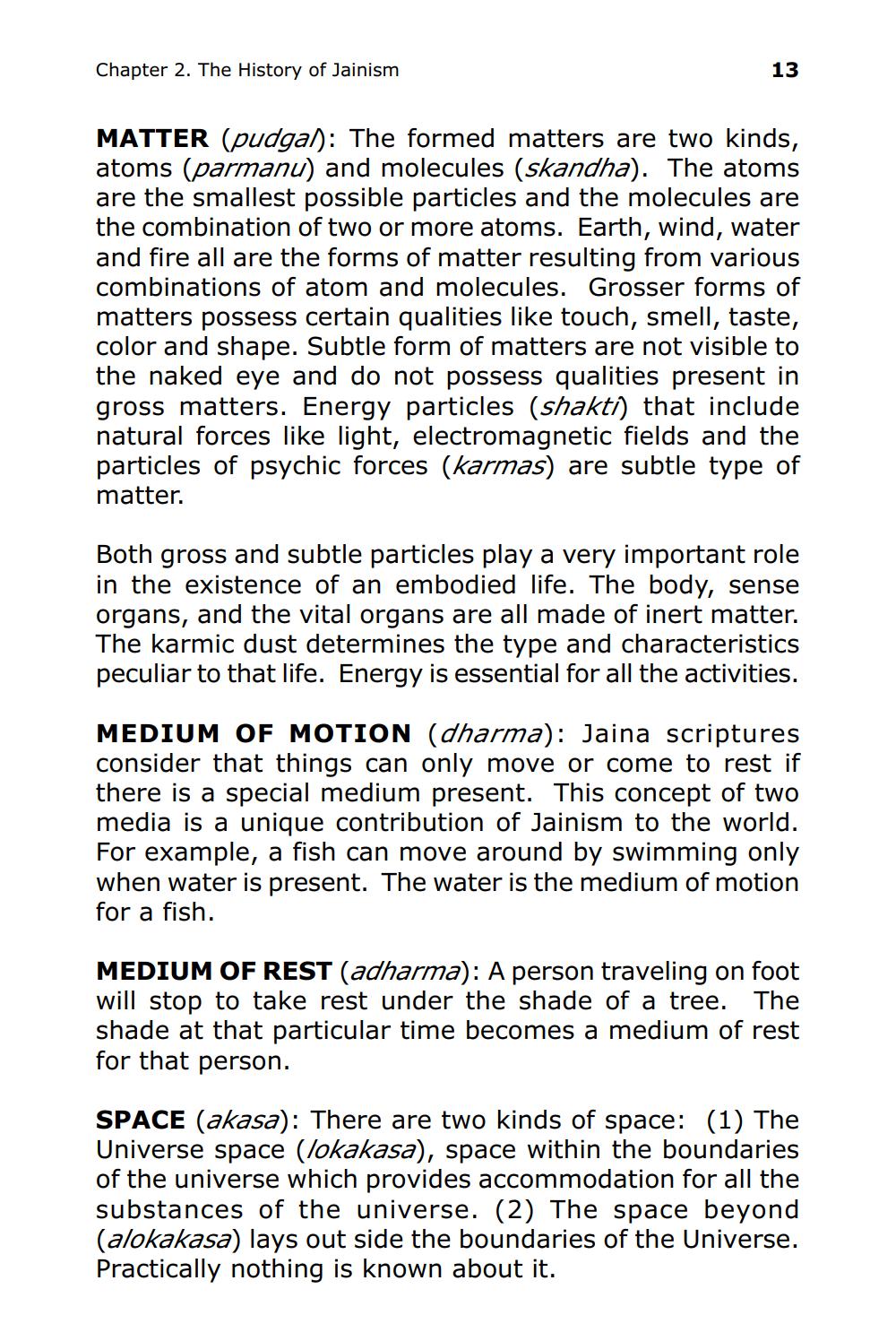________________
Chapter 2. The History of Jainism
13
MATTER (pudgal): The formed matters are two kinds, atoms (parmanu) and molecules (skandha). The atoms are the smallest possible particles and the molecules are the combination of two or more atoms. Earth, wind, water and fire all are the forms of matter resulting from various combinations of atom and molecules. Grosser forms of matters possess certain qualities like touch, smell, taste, color and shape. Subtle form of matters are not visible to the naked eye and do not possess qualities present in gross matters. Energy particles (shakti) that include natural forces like light, electromagnetic fields and the particles of psychic forces (karmas) are subtle type of matter.
Both gross and subtle particles play a very important role in the existence of an embodied life. The body, sense organs, and the vital organs are all made of inert matter. The karmic dust determines the type and characteristics peculiar to that life. Energy is essential for all the activities.
MEDIUM OF MOTION (dharma): Jaina scriptures consider that things can only move or come to rest if there is a special medium present. This concept of two media is a unique contribution of Jainism to the world. For example, a fish can move around by swimming only when water is present. The water is the medium of motion for a fish.
MEDIUM OF REST (adharma): A person traveling on foot will stop to take rest under the shade of a tree. The shade at that particular time becomes a medium of rest for that person.
SPACE (akasa): There are two kinds of space: (1) The Universe space (lokakasa), space within the boundaries of the universe which provides accommodation for all the substances of the universe. (2) The space beyond (alokakasa) lays out side the boundaries of the Universe. Practically nothing is known about it.




